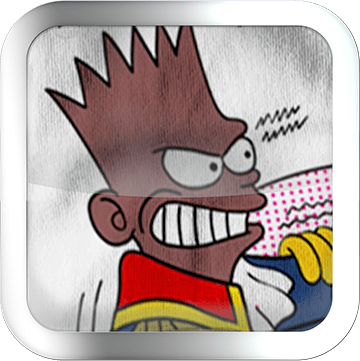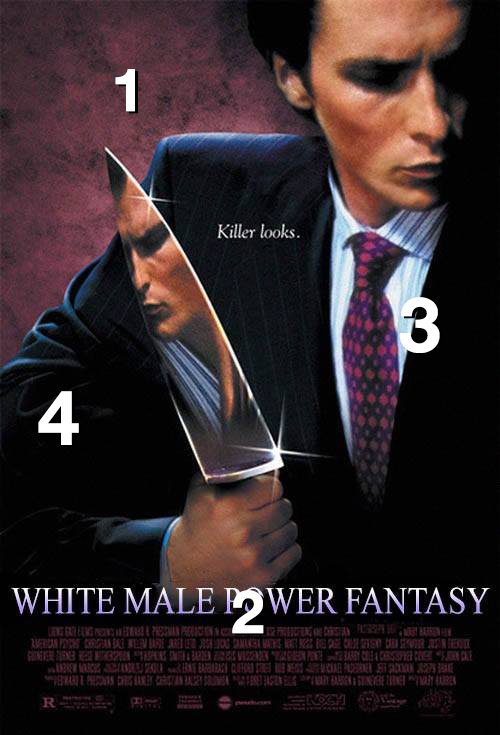ORIGIN STORY
(PDF)
Georgie Payne
Jenson Leonard (b. 1990) began making memes under the alias
@CoryInTheAbyss in 2015 at the age of twenty-five. Drawn to
the immediacy of the meme format, Leonard was captivated by
the ability to create and post content to various social
media platforms and message boards almost instantaneously to
reach audiences both far and wide. A
2017 Seattle Weekly article recounts how he turned to memes after receiving his MFA in
Creative Writing (with a focus on poetry) from Pratt
Institute, New York. In the article, he states: “I
felt frustrated with its [poetry’s] ivory-tower
elitism. With a poem, you might get published in a journal,
and then a few people in academia might read it. When I make
a meme, I post it, and almost right away it reaches
thousands, sometimes hundreds of thousands of people.
It’s immediate, and honestly, probably the most
pragmatic way to reach people now.”
The University of Oxford–trained biologist Richard
Dawkins, in his seminal 1976 book The Selfish Gene,
coined the term “meme” to define a unit of
cultural transmission or imitation. An expansion of Charles
Darwin’s concept of genetic evolution, Dawkins’s
theory holds that humans evolved both through biological
genes and through cultural memetics. Wide ranging in its
definition, Dawkins’s idea of a meme includes anything
from ideas to behaviors that are passed from person to
person.
By the mid to late 1990s, with the commercialization and
introduction of the World Wide Web in homes across the
world, a new concept of the meme was introduced into the
public consciousness—the internet meme. The
proliferation of the internet meme resulted in an evolution
of the mainstream definition of the term “meme”
itself, ultimately overshadowing Dawkins original concept.
Today, “meme” refers to content spreading online
from user to user, most prominently on social networking
sites, direct messaging platforms, and public web forums.
Today’s memes can take many different formats—a
still image, an animated GIF, or even a video—but they
are most recognizable as low-res images or screenshots
paired with comedic text. Often created in response to
specific events—whether stories from the global news
cycle or bespoke inside jokes—internet memes are
remixed and transposed to demonstrate a wide variety of
takes on the original source material, information, or
event.
As Leonard recounts in a 2017 interview with writer manuel
arturo abreu for AQNB, entitled“Still I Shitpost: Cory in the Abyss on a Communism of the
Visual + Anti-Blackness in the Meme-o-sphere,” he originally began making work in the standard
“Twitter format” (the modern-day version of a
caption contest, featuring an image or screenshot in a white
box with black text above or below), but his format quickly
shifted within the first year, evolving into a more ornate
and heavily parodic style of the original content (OC) he is
known for today. He states:
My work exists within the framework of meme and poor digital
image, but it distinguishes itself from the herd through its
thick pop cultural plaster. When one encounters a Cory In
The Abyss meme, my hope is that they see something that
looks like it was produced by more than one person (in a way
it is). I want my work to look and feel like a microdose of
big-budget Hollywood detritus. I want people to ask
themselves why my memes are so extra, to question their
production value, and the absurdism behind that (because the
locomotive subsumption of creativity into capitalism is
absurd). The aesthetic maximalism of my memes is my way of
finessing on white meme bros, but it’s also a means of
grabbing the audience’s attention through a visual
language capitalism has already inundated them to pay
attention to. Once I have pulled them in, finally, through
that subterfuge, giving them my message. After that
they’re free to keep scrolling.
The aesthetics of Leonard’s work employs the visual
language of American capitalism, already familiar to his
audiences, to draw the viewer into far more complex
theories. His imagery illustrates the paradoxes and
complexities of the inner workings of meme culture,
specifically in relation to the co-option and
commercialization of Black culture and online vernacular
which has been brilliantly and thoroughly theorized by
scholars and writers including, but not limited to,
manuel arturo abreu,
Aria Dean,
Legacy Russell,
Lauren Michele Jackson, and
Doreen St. Félix. Furthermore, he illustrates what arturo has termed
“online imagined Black English,” which describes “the phenomenon of non-Black English
speakers with no fluency using real or imaginary linguistic
features of Black English”—exemplifying how
disembodied and essentialized versions of Blackness have
been commodified and reappropriated by white and other
non-Black bodies, both online and off.
In the 2017 work Burnt Cork 2.0, Leonard employs DC
Comics superhero Cyborg to orchestrate a direct
confrontation with his audience, specifically his white and
non-Black fellow meme creators, regarding their
commodification of performative online Black affects for a
certain kind of “cool factor.” Paired with an
image of Cyborg’s half-man, half-robot body positioned
at the ready to take on anyone who dares cross him, the
work’s text states, “You wouldn’t last a
week without digital Blackface.” Leonard again
addressed this subject in 2020 with Gwan Online, an
even more literal translation of the minstrel performance of
a new era.
In many ways, Leonard’s work can be traced to several
distinct histories within contemporary visual art that have
used popular culture and mainstream media platforms to
satirize and critique social structures and patterns of
behavior, particularly in relation to race, class, and
gender. The foremost connection is the culture jamming
movement of the 1980s—a form of tactical media protest
used to disrupt or subvert mainstream media and corporate
advertising to expose their questionable modes of operation.
The movement, which itself can be seen as an adaptation of
the 1950s technique of
détournement developed by the avant-garde
artist-activist group the Situationist International, turned
the capitalist system and its media culture against itself,
subverting the original meanings of its advertising slogans
and logos toward radical ends. Artists and collectives of
this genre, including the Yes Men, Adbusters Media
Foundation, and the Billboard Liberation Front, appropriated
iconography from megacorporations ranging from
McDonald’s to Marlboro to critically engage audiences
to reflect on these industries’ corrupt production
practices and the evils of the capitalist system.
Much like the work of the culture jamming movement,
Leonard’s practice pits pop cultural icons and the
mainstream media advertising universe against itself,
subverting the original messaging to convey radical
ideology. In the digital “abyss” in which
Leonard operates, Y2K pop stars such as Beyoncé,
Aaron Carter, and *NSYNC become comrades of political
philosophers like Guy Debord, Karl Marx, and Angela Davis.
Advertisements for iconic fast-casual American restaurants
like Ruby Tuesday and Applebee’s become beacons for
the impending race war, harbingers of radical race and class
consciousness. Tyler Perry’s Madea film
franchise is reimagined through the lens of the
Combahee River Collective,
championing “Madea’s Proletariat
Uprising.” Meanwhile, the poster for slasher film
American Psycho(2000) is recast in a more honest
light as “White Male Power Fantasy.”
Furthermore, Leonard continues in this lineage with an
adaptation of one of his most iconic works, ancient white proverb, displayed on a billboard located on U.S. Route 9, in
Tivoli, N.Y., from April 19 to May 10, 2021, hacking
into public advertising to insert one of the artist’s
works both online and AFK (away from keyboard).
At the same time, Leonard’s work is also the latest
iteration in a history of net art practices, not only
because of its location and circulation as a born-digital
artwork on social media platforms and in its latest
iteration as this artist-made, browser-based exhibition, but
also because of the ways it has used web space as a place
for critique. Specifically, his work follows in the
footsteps of artists who have used satire and the medium of
the web to critique dominant white society and underscore
social contradictions of Western society. Leonard’s
practice falls into a lineage of net art from the ’00s
that exercises similar elements of contemporary meme
practices, subverting user-driven web platforms to stage
interventions into web space. We can look at Leonard’s
work as related to works such as Mendi + Keith
Obadike’s
Blackness for Sale (2001), Damali Ayo’s Rent-a-Negro(2003), and Jayson Musson’s
Art Thoughtz (2010–12). All these artists exercise comedic prowess
and digital know-how to satirize expected forms of racial
performativity in relation to the white gaze and the
essentialized version of Black identity that has been
created and maintained by and for white audiences. While
Musson’s Hennessy Youngman persona refers to this as
the “Jazz principle”—that is, white desire
for “the exotic other”—sociologist and
civil rights activist W. E. B. Du Bois introduces this
concept as “double consciousness,” the long-held
theory that Black Americans have developed a dual sense of
self: the ability to see themselves both as they are and as
they are perceived by a white viewer.
Furthermore, Leonard’s practice, much like Ayo and
Musson’s works, suggest a link to a history of Black
comedy that has used humor to speak critically both to and
about white audiences — drawing connections to the
work of stand-up legends such as
Dick Gregory,Godfrey Cambridge,Richard Pryor,
Wanda Sykes,
and
Dave Chappelle. As the late, great Gregory once said, “You can’t laugh social problems out of existence,”
but you can use it as a tool—which is what
these comics have done, using their comedy routines to
confront and name the unmarked nature of white normative
bodies, values, and social practices. This history exists in
what literary and Black studies scholar Christina Sharpe
calls “the wake” of the catastrophic violence of
the American Atlantic chattel slavery system and its
continued unresolved legacies. As media scholar Bambi
Haggins outlines, Black American humor, from Civil
War–era minstrelsy to stand-up comedy of the civil
rights era and beyond, has always been a marker for race
relations, both in “how much they have changed and how
much they have stayed the same over time.”Though the
medium might change, the joke stays the same— a marker
of the “progress” made.
In Ancient White Proverb (2016), Leonard
repurposes Grimace, a fuzzy purple character featured in
McDonald’s advertising, to playfully take on the
evasive
“I don’t see color”
trope. The text reads “I don’t care if
you’re purple (Ancient white proverb).” Grimace,
in this instance, is not in fact being used as a tool to
reflexively critique the McDonald’s corporation, but
instead to call out the “I don’t care if
you’re purple, green, or polka-dotted” platitude
that often circulates in liberal-leaning white circles.
Though the colors invoked might change, the result of
uttering the phrase stays the same: it’s a deflective
attempt at the ever elusive racial neutrality that downplays
the realities of how race operates in society, and a
conflation of the very real histories and realities of BIPOC
lives with that of nonexistent purple, green, and
polka-dotted people. Furthermore, the phrase implicates a
flawed understanding of racism as simply the work of
singular individuals and their actions—the “bad
apple” mentality—rather than as a systemic
function of society.
In an August 2020 online panel discussion entitled “Race Jam: A Panel on Memes and Online, Imagined
Blackness” (hosted as part of Leonard’s residency at the
Buffalo, N.Y.–based arts organization
Squeaky Wheel), the artist addressed the many ways in which
“Blackness, Black culture, Black affect, Black
vernacular” has been “extracted, surveilled, and
commodified down to the nearest Nae Nae.” Speaking
with fellow meme creator panelists
Ashley Khirea Wahba,
Nicolás Vargas, and
Pastiche Lumumba, Leonard shared how his follower count rose following the
state-sanctioned murder of George Floyd at the hands of
Minneapolis police earlier that summer. Acknowledging the
harrowing set of circumstances that gained him over 2,000
followers in a week, Leonard stated:
I’m not encouraged by that. I’m deeply disturbed
by the fact that the increased visibility of my meme page
and my content is intimately tied to Black death. And it
took a succession of Black people dying for white meme pages
to be like “Hmm, well, maybe this might be a good
idea,” and that really fucks with me and makes me not
want to participate in this thing. Because now it’s
tainted. My page growth is now associated with that
fuckshit.
Here, Leonard is articulating what critic, artist, and
curator Aria Dean reminds us of in her 2016 essay “Poor Meme, Rich Meme”:
“These videos proliferate alongside memes, brushing up
against each other on the same platforms. Further, black
death and black joy are pinned to each other by the white
gaze.” While his viewership went up following
Floyd’s death, Leonard’s drive to produce
content went down, specifically in response to not wanting
to appease his new white viewership and pushing back against
the infinite scroll of the internet and the tireless
production of online content.
In a work entitled BLTN (read: Better Late Than
Never), a muscular white Rambo-esque man lets out a roar as
he runs from a swarm of helicopters quickly approaching
behind him. He holds a machine gun in each outstretched arm
while a blaze of fire engulfs the bottom of the frame. The
text on top reads: “In the year 2016 white liberals
are just now starting to notice . . . White Nationalism.
Better late than never I guess.” The artists describes
the work as being “spurred by [his] amusement in the
uptick of newfound political awareness amongst white
liberals about the nationalist elements that have always
permeated American politics, but became more legible when
the president was explicitly white supremacist, as opposed
to prior, more tacitly white supremacist
administrations.” Following in the same vein,
Yacubian Cave Trickery (2019) depicts Captain
Caveman from the 1970s Hanna-Barbera cartoon shouting,
“Me go to anti-racism workshop, me fix racism!”
While made the year before, the work remained relevant in
the summer of 2020 as performative allyship spreading online
reached an apex. Leonard, through addressing the
“marketized logic of the anti-racism industrial
complex,” notes how these topics remain relevant
within his work yet fade in and out of algorithmic fashion
within the larger culture. While anti-racist resources,
training workshops, and readings lists were the dominant
topic of conversation on influential social media platforms
this past summer, they slowly began to fade out of our
timelines, almost entirely gone by the time the first leaf
fell in autumn.
While it’s hopeful that for many white people
this moment was a powerful “wake up” call about
the existence of systemic oppression and racism, these works
point to the fact that “the work” is not over
after one workshop, one book, or one Instagram post. In his
2009 book Black Is the New White, Paul Mooney,
legendary comedian and frequent collaborator of Richard
Pryor, writes: “For white people, watching the Rodney
King video is like a world premiere movie. ‘Oh, I
didn’t know the nice policemen did that.’ For
Black people, it’s a rerun. It’s been in
syndication for a long time. We’ve seen it all
before.” This apathetic white attitude perpetuates
across time, and was more recently satirized by filmmaker
Chester Vincent Toye’s comedic short
I’m SO Sorry
(2021) and personified by
Saturday Night Live’s Beck Bennett in a
satirical commercial advertisement for
5-Hour Empathy
during an October 2020 episode. Given the opportunity to
drink “five full hours of complete intimate
understanding of systemic oppression and ever-present
racism,” the white male main character (and later his
white wife) find every possible excuse to delay accessing
the knowledge they claimed to desperately want to know,
exposing performative forms of activism for what they
are—all talk and no action.
In recent months, rather than working overtime within the
tireless production cycle to create work that appeals to his
newfound audience, Leonard has directed his practice to
become even more intentional. The
Yacht Metaphor exhibition is designed to enable
viewers to engage longer and deeper, and to consider the
works’ continued relevance and messaging, particularly
within extended histories of artistic expression and
critique. Offering an experience that is distinctly separate
from algorithmic mediation, the exhibition frees the memes
from the grasp of the dominant social media platforms on
which they typically circulate, inviting viewers to stop the
scroll and explore the significant layers of history,
reference, and knowledge hidden within the abyss.
Endnotes
-
manuel arturo abreu, “Still I Shitpost: Cory in the
Abyss on a Communism of the Visual + Anti-Blackness in the
Meme-o-sphere,” AQNB, December 12, 2017,
https://www.aqnb.com/2017/12/12/still-i-shitpost-cory-in-the-abyss-on-a-communism-of-the-visual-antiblackness-in-the-meme-o-sphere-with-manuel-arturo-abreu.
-
Richard Dawkins, The Selfish Gene, 40th Anniversary ed.
(Oxford: Oxford University Press, 2016).
-
Jenson Leonard, “An Interview with Jenson Leonard on
the Intersection of Poetry and Memes,”interview by
Eben Benson, Juxtapoz, June 30, 2017,
https://www.juxtapoz.com/news/collage/an-interview-with-jenson-leonard-of-coryintheabyss.
- abreu, “Still I Shitpost.”
-
Leonard refers here to artist and theorist Hito
Steyerl’‘s idea of the “poor
image.”
- abreu, “Still I Shitpost.”
-
manuel arturo abreu, “Online Imagined Black
English,” Arachne, n.d.,
https://arachne.cc/issues/01/online-imagined_manuel-arturo-abreu.html.
-
Marilyn DeLaure and Moritz Fink, eds., “Culture
Jamming: Activism and the Art of Cultural
Resistance,”Mark Dery, “Culture Jamming:
Hacking, Slashing, and Sniping in the Empire of
Sign,” in Culture Jamming: Activism and the Art of
Cultural Resistance, ed. Marilyn DeLaure and Moritz Fink
(New York: New York University Press, 2017), 58.
-
“(1977) The Combahee River Collective
Statement,” Black Past, November 16, 2012,
https://www.blackpast.org/african-american-history/combahee-river-collective-statement-1977.
-
By using AFK, I reference Legacy Russell referencing
social media theorist Nathan Jurgenson, who prefers this
term in lieu of the more well-known shorthand
“IRL” (iIn rReal lLife), which, as Russell and
Jurgenson, argue “ is a misunderstanding, an
antiquated falsehood, one that implies that two selves
(i.e. online versus offline) operate in isolation from one
another, inferring that online activity lacks authenticity
and is divorced from a user’s ‘real’
identity, offline.” Legacy Russell, “On
#GLITCHFEMINISM and the Glitch Feminism Manifesto,.”
Res., 2016/17,
http://beingres.org/2017/10/17/legacy-russell/22 Oct. 2017. Web. 19 Mar. 2021.
-
See “INTERNET EXPLORERS” by Ceci Moss,
“Internet Explorers,” in Mass Effect: Art and
the Internet in the Twenty-First Century, ed. Lauren
Cornell and Ed Halter (Cambridge, MA: MIT Press), Mass
Effect (p147)— which draws out this history,
specifically looking at artists (between 2005 and -2010)
who have chosen to forgo the traditional exhibition space,
with its excessive limitations, and instead utilize use
the digital space to exhibit their work, specifically
following the rise of major social media platforms
(Friendster, Myspace, Facebook, YouTtube, Twitter, and
Tumblr).
-
Alexander Iadarola, “What Up Internet,”
Rhizome: Net Art Anthology, January 12, 2018,
https://rhizome.org/editorial/2018/jan/12/what-up-internet/.
-
W. E. B. Du Bois, “Strivings of the Negro
People,” Atlantic, August 1897,
https://www.theatlantic.com/magazine/archive/1897/08/strivings-of-the-negro-people/305446/.
-
Musson’s Hennesy Youngman character is a reference
toHenny Youngman, king of the one-liners, and has reference
Def Comedy Jam as a source of inspiration ; Ayo's
work is an adaptation of Godfrey Cambridge's1965 stand-up
bit,
The Rent-A-Negro Plan, also similar to a bit Dick Greggory did around the same
time.
-
Western Washington University, “KVOS Special: Dick
Gregory,” YouTube, uploaded July 9, 2010,
https://youtu.be/75ajExLNU9k.
-
Bambi Haggins, Laughing Mad: The Black Comic Persona in
Post-Soul America (New Brunswick, NJ: Rutgers University
Press, 2007), 21.
-
Black, Indigenous, and people of color. For more
information on this term, see Sandra E. Garcia,
“Where Did BIPOC Come From?,” New York Times,
June 17, 2020,
https://www.nytimes.com/article/what-is-bipoc.html
-
Squeaky Wheel, “Race Jam: A Panel on Memes and
Online, Imagined Blackness,” with Jenson Leonard,
Ashley Khirea Wahba, Nicolás Vargas, and Pastiche
Lumumba, YouTube, uploaded August 20, 2020,
https://youtu.be/dOtgYW5i1LQ.
-
Jenson, in “Race Jam: A Panel on Memes and Online,
Imagined Blackness.”
-
Jenson, in “Race Jam: A Panel on Memes and Online,
Imagined Blackness.”
-
Paul Mooney, Black Is the New White: A Memoir (New York:
Gallery Books, 2010), 341.


























